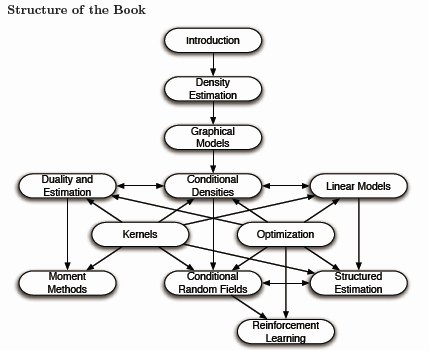Here is the draft for
Introduction to Machine Learning (234 pages),
by
Alex Smola and S.V.N. Vishwanathan
(does not seem to be published yet)
Introduction: Over the past two decades Machine Learning has become one of the mainstays of information technology and with that, a rather central, albeit usually hidden, part of our life. With the ever increasing amounts of data becoming available there is good reason to believe that smart data analysis will become even more pervasive as a necessary ingredient for technological progress.
The purpose of this chapter is to provide the reader with an overview over the vast range of applications which have at their heart a machine learning problem and to bring some degree of order to the zoo of problems. After that, we will discuss some basic tools from statistics and probability theory, since they form the language in which many machine learning problems must be phrased to become amenable to solving. Finally, we will outline a set of fairly basic yet effective algorithms to solve an important problem, namely that of classiffication. More sophisticated tools, a discussion of more general problems and a detailed analysis will follow in later parts of the book.

1.1 A Taste of Machine Learning
Machine learning can appear in many guises. We now discuss a number of
applications, the types of data they deal with, and finally, we formalize the
problems in a somewhat more stylized fashion. The latter is key if we want to
avoid reinventing the wheel for every new application. Instead, much of the
art of machine learning is to reduce a range of fairly disparate problems to
a set of fairly narrow prototypes. Much of the science of machine learning is
then to solve those problems and provide good guarantees for the solutions.
1.1.1 Applications
Most readers will be familiar with the concept of web page ranking. That
is, the process of submitting a query to a search engine, which then finds
webpages relevant to the query and which returns them in their order of
relevance. See e.g. Figure 1.1 for an example of the query results for "machine learning".
That is, the search engine returns a sorted list of webpages
given a query. To achieve this goal, a search engine needs to 'know' which
pages are relevant and which pages match the query. Such knowledge can be
gained from several sources: the link structure of webpages, their content,
the frequency with which users will follow the suggested links in a query, or
from examples of queries in combination with manually ranked webpages.
See the whole book draft at
alex.smola.org/drafts/thebook.pdf
